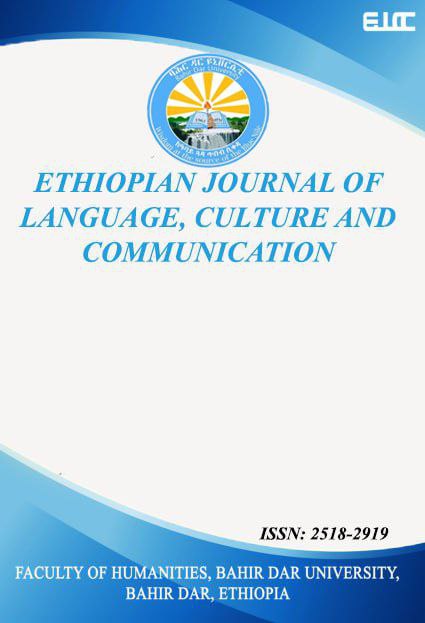Analysis of Ashura ritual performance and its symbolic representation at the Dire Sheikh Hussein Shrine
Abstract
The objective of this research is to analysis ritual performance and its symbolic representation of Ashura Ritual performances at the nalysis ritual performance and its symbolic representation of Ashura Ritual performances at the Dire Sheikh Hussein Shrine. This religious site, situated in the Gololcha Woreda, Anajina Kebele of the Bale Zone, is believed to have been established in the 12th century. Ashura Ritual is performed on Muharam month, the first month of Hijira. Ashura Ritual is performed for ten consecutive days at the shrine of Dire Sheikh Hussein. The research employed a qualitative approach, utilizing observation and interview methods for data collection. The Performance and Symbolism Theories are guided the analysis of the collected data to describe their meanings. The study revealed that Ashura Rituals are performed at the place called ‘Doqqoo Karaa’, in front of the main gate of the shrine. During Ashura reading Quran, prayong, Baroo spiritual music performing, Chincha, Shubisa spiritual music performing, eating food together rituals are performed. The study indicated that from ten consecutive days, the ninth and the tenth days are fasting days. Ashura ritual is performed once a year at the shrine. The Ashura ritual is classified on commemorative ritual types. The study suggests that the Ashura spiritual ritual occupies a distinctive position regarding its social and spiritual significance. These rituals are fundamental community practices that encapsulate vital cultural and spiritual beliefs. Furthermore, the Ashura rituals promote values such as unity, solidarity, communal support, and spirituality among local residents.
References
Copyright (c) 2025 Author(s)

This work is licensed under a Creative Commons Attribution 4.0 International License.
Authors who publish with this journal agree to the following terms:
- Authors retain copyright and grant the journal right of first publication with the work simultaneously licensed under a Creative Commons Attribution License that allows others to share the work with an acknowledgement of the work's authorship and initial publication in this journal.
- Authors are able to enter into separate, additional contractual arrangements for the non-exclusive distribution of the journal's published version of the work (e.g., post it to an institutional repository or publish it in a book), with an acknowledgement of its initial publication in this journal.
- Authors are permitted and encouraged to post their work online (e.g., in institutional repositories or on their website) prior to and during the submission process, as it can lead to productive exchanges, as well as earlier and greater citation of published work (See The Effect of Open Access).


